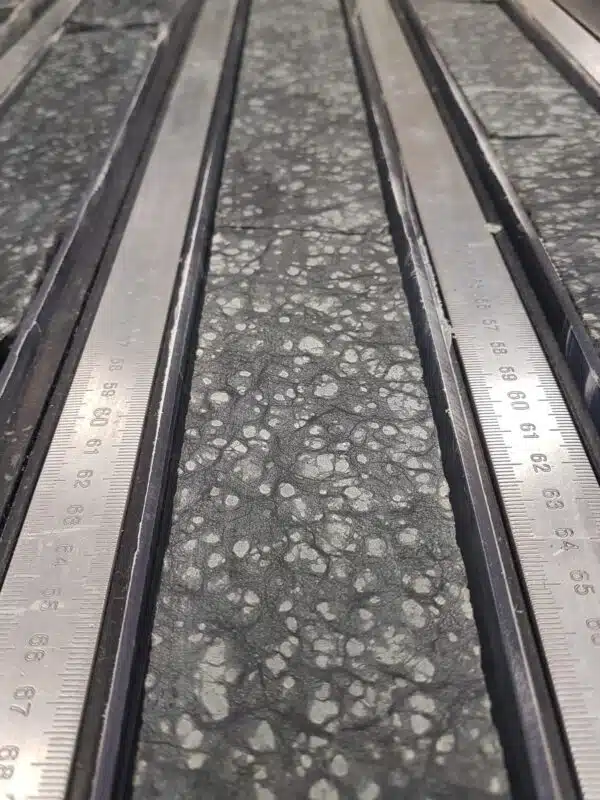The unprecedented drilling operation reached an incredible depth of 1.2 kilometers (0.75 miles) into the Mid-Atlantic Ridge, an area where the ocean floor extends, allowing rocks good to appear. This amazing feat was done as part of the International Oceanography Program, using the research vessel JOIDES Resolution.
Scientists focused on the area near the Lost City, which is an area full of hydrothermal vents. This unique area, characterized by bee-like shapes and tall buildings, emits molecules such as methane and hydrogen that support a variety of microbes and invertebrates.
The drilling process presented many challenges due to the brittle nature of the mantle rock, which tends to collapse. However, the team was exceptionally lucky as the material allowed for smooth drilling and facilitated the extraction of relatively intact rock samples in a continuous area of more than 70% core.
This achievement far surpasses the first attempt, which only reached a depth of 201 meters. The samples taken provide unprecedented information about the geological and biological processes occurring underground, providing important information about the functioning of our planet.
Redefining our understanding of positive energy
The implications of this discovery are far-reaching, challenging traditional notions of mantle motion and convection. In the past, scientists believed that liquid feces moved directly due to the force of convection. However, new data suggest that stool movements may be more complex, involving migration that can influence the way stool tissues meet and move.
This revelation has major implications for our understanding of the organization and distribution of geological resources. Oblique melting paths of the mantle can affect the way minerals and elements are dispersed across the Earth’s surface, potentially influencing mineral composition and geological structures.
In addition, this discovery sheds light on the variation in the composition of the mantle, which is often described as having different geochemical “flavors” depending on the contact areas and processes of tectonic plate renewal. The insights gained from this research could change our understanding of the Earth’s internal forces and their effect on the surface.


Exploring the limits of life in extreme environments
One of the most impressive aspects of this success is its ability to reveal the limits of biological life in extreme conditions. By extracting samples from depths where temperature and pressure are exceptionally high, researchers aim to understand the limits of biological survival.
The ability of organisms to survive in such harsh conditions may provide important information about the origin of life on Earth and the possibilities of extraterrestrial life in similar conditions on other planets. This research complements other fundamental discoveries in the field of astronomy, such as the unexpected discovery of unique quasars with mysterious origins, which continue to baffle scientists and expand our understanding of the universe.
To better illustrate the significance of this discovery, consider the following illustration:
| Part | Past Report | New Success |
|---|---|---|
| Depth of Excavation | 201 meters | 1,200 meters |
| An Example of Integrity | It is classified | It’s almost solid |
| The Influence of Science | Few comments | Paradigm shift factors |
Developing studies of tectonics and plate dynamics
This unprecedented drilling depth marks a major breakthrough in the study of tectonic movements and plate dynamics. The data collected can improve our understanding of how the forces acting beneath the Earth’s surface influence earthquakes, volcanic eruptions and the movement of the planets’ continents.
Scientists can now develop new models to predict and interpret volcanic and volcanic activity, especially in low-lying and isolated areas. This development confirms the importance of the Mid-Atlantic Ridge as an important place to study the interactions between the mantle and the Earth’s surface, paving the way for more in-depth research projects in the future.
The implications of this research extend beyond our planet, which may inform our understanding of geological processes in other celestial bodies. As this discovery rewrote our knowledge of Earth’s interior, other areas of study continue to challenge our assumptions. For example, the discovery of the smallest dinosaur egg ever found in China has similarly changed our understanding of prehistoric life.
In short, this groundbreaking breakthrough in drilling represents a giant leap forward in our quest to understand Earth’s inner workings. By providing unprecedented access to the planet’s mantle, scientists have unlocked a wealth of data that will undoubtedly revolutionize many fields of study, from geology and plate tectonics to of astronomy and the search for extraterrestrial life.
#Unprecedented #Discovery #Scientists #Deeper #Earths #Crust